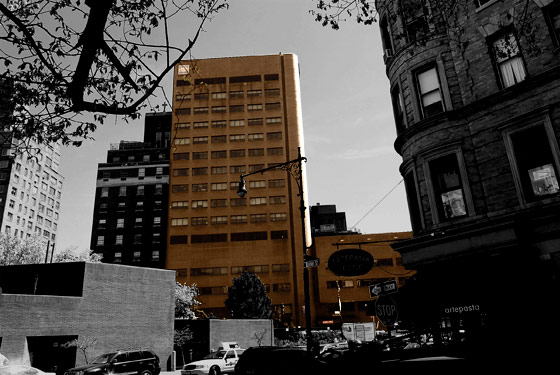
The obituary for St. Vincent’s, when it is finally written, will recall that the hospital’s greatest moment—and its darkest—came in the eighties, as it found itself quite awkwardly in the thick of the global AIDS plague. The flood of patients was extreme, spilling into every available bed, then throughout the surrounding corridors, where masking tape marked off virtual rooms.
“Every doorway you looked in there was a young man lying in the bed, very, very ill,” recalls Cynthia O’Neal, who first witnessed the devastation in 1987. She was moved to co-found (with the director Mike Nichols) the AIDS services agency Friends in Deed. “It felt like a war hospital. It was very, very affecting, very powerful. I spent a lot of time in those rooms.”
Sal Licata, a city AIDS specialist, spent his last days at H-01 (H for “Hallway”), waiting in vain for a room to die in. A few feet down the hall was pneumonia-weakened Aldyn McKean, his old friend, a hero of ACT UP. If you knew one patient at the hospital, you likely knew others.
“I lost two lovers at St. Vincent’s. One was Jim Owles—I was holding him, I’ll never forget,” says Allen Roskoff, president of the democratic club named after Owles, the founding president of the Gay Activists Alliance. Sarah Schulman, a writer and activist, remembers the many visits with David Feinberg, a writer whose descent into death was anything but pretty. “His dying wish was to talk to Carrie Fisher. I was there when she called,” recalls Schulman. “Boy, I don’t have any happy memories of St. Vincent’s. But I’m glad it was there.”
For anyone familiar with those rooms and those days, news of St. Vincent’s demise has been hard to accept. There is no true standing memorial to HIV victims, even though there were more from New York by 1995 than U.S. deaths in the Vietnam War. So the bland sarcophagus along Seventh Avenue holds that place in the geography of our plague memory; it is a museum, almost, a place haunted by Whitman’s “carols of Death.” We see the ghosts as we pass there even now, we hear their voices, their last words, we remember their weight in our arms, the way they vanished from those rooms.
It was a cultural anomaly for the flagship in the Catholic Church’s city health-care network to find itself so fully entangled with the gay community. In the earliest days, the clashes were hideous. What had been a sleepy, crucifix-bedecked hospital was serving a desperate and angry group of men who’d often spent their lives rebelling against the repressive dicta of the Church. Catholic leaders fought essential public-health initiatives like distributing condoms or teaching safer sex, while early on, hospital staff members could be hostile to patients and cruel to their lovers and friends. Many people working in the AIDS division there say they had to keep their work secret from the Sisters of Charity, who founded the hospital. And as AIDS began to account for a majority of admissions, the hospital became comfortable with its extraordinary role.
At the same time, “We were—oh my gosh—flooded with funds,” says Mary Catherine George, the hospital’s AIDS research-grant coordinator. “It propped up the hospital for a long, long time.” No longer. The success of AIDS medications brought a drop in hospitalizations and contributed to the long slide to today’s financial emergency. It’s $700 million in debt and losing $10 million a month.
However it turns out for St. Vincent’s—condos or the wrecking ball—this history goes with it. As Cynthia O’Neal puts it, “It’s unthinkable it not being there. It should be respected, what happened there in that hospital.”
Have good intel? Send tips to intel@nymag.com.